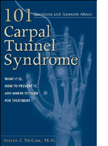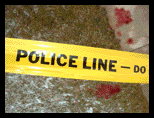Reviews:
Reporter World provides a variety of safety equipment, identification products, specialized high-visibility clothing, pertinent news, product reviews, book reviews and useful links specifically for reporters, writers, assignment editors, news correspondents, journalists, ENG crews, photographers, production staff, directors, segment producers, media security personnel, and freelancers: in short, anyone who is part of the news gathering, information reporting, or documentary film industries.
In this section we review various products and services of relevance to reporters, writers, correspondents, ENG teams and production staff. These products include cameras and accessories; computer hardware and software; scanners; printers; books and other products. Smaller, mini-reviews, are also available in other sections of this site including Products, Books and Movies.
We are constantly adding additional reviews to this section. If you have any suggestions for other products you would like us to review, simply e-mail us using the feedback address on our Terms of Service page. Please supply us with as much information as you can about the product (including name, manufacturer, model number) or book (including title, author, ISBN and publisher).
 Title: 101 Questions and Answers About Carpal Tunnel Syndrome Title: 101 Questions and Answers About Carpal Tunnel Syndrome
Author: Dr. Steven McCabe
Copyright: © 2002
Publisher: Contemporary Books, a division of McGraw-Hill
ISBN: 0-7373-0592-4
Relevancy: Carpal tunnel syndrome is a common problem among writers and journalists who pound away at their keyboard all day working on stories and editing their work. 101 Questions and Answers About Carpal Tunnel Syndrome outlines what the syndrome is, how to prevent the affliction and what to do if you're affected.
Review: 101 Questions and Answers About Carpal Tunnel Syndrome is a solid guide to figuring out if you have carpal tunnel syndrome and what you can do about it. Written by a noted hand surgeon, Dr. Steve McCabe, the book uses an extensive question and answer format to explain the debilitating and sometimes crippling condition affecting millions of people around the world.
The book's chatty style starts with the basics of carpal tunnel syndrome. Here, McCabe uses eight questions (and their answers) to introduce the subject and lay the groundwork for the rest of the book. What is carpal tunnel syndrome? Why do people get carpal tunnel syndrome? Why is it called a syndrome? What are the main symptoms of carpal tunnel syndrome? How serious are these symptoms? What activities cause the symptoms of carpal tunnel syndrome? Is carpal tunnel syndrome the only cause of hand numbness? And finally, what other conditions can be confused with carpal tunnel syndrome?
McCabe uses the next chapter, Understanding the Hand: Anatomy and Physiology, to explain the science behind carpal tunnel syndrome. Readers are introduced to the underlying structures of the hand and wrist, from a layperson's point of view. Throughout the book, author McCabe explains the complexities of carpal tunnel syndrome in a friendly, easy-to-understand format. And, for the most part, he succeeds; only a few places does he backslide into "doctor-speak" -- and only, it seems, when he absolutely has to do so.
McCabe explains how the carpal "tunnel" got its name and what the body's medial nerve does. The general function and activation of nerves is explained nicely so that readers can understand the vital role they play in our bodies. This section also explains why compressing the medial nerve as it travels through the wrist (or more accurately, through the carpal tunnel) can be absolutely excruciating. Also covered is the all important transverse carpal ligament, a structure that forms the "top" of the carpal tunnel.
Interestingly for writers who find themselves in a constant state of being hunched over their keyboards, McCabe's connection between arthritis of the neck and subsequent numbness of the hands is eye-opening. Anybody working on ergonomically incorrect chairs and workstations will think twice about doing so after reading this section.
Some readers might be interested in the history and epidemiology of carpal tunnel syndrome, and therefore will devour the section in the book that deals with these related topics. Others, however, interested in their own particular predicament, will skip ahead to the next section. One of the advantages of the book's Q & A style is that readers can move freely within the text, with little or no "penalty" for skipping ahead.
Workplace injuries
In Part Four: Hands at Work, McCabe tackles the repetitive stress injury controversy and how carpal tunnel syndrome could be caused by the same seemingly insignificant movements over time. Here McCabe asks "are there anatomical and physiological reasons for linking repetitive work activities and carpal tunnel syndrome?" The answer, we read, is yes -- and it also turns out workplace jobs that cause unusual flexion or extension of the wrists is the source of many compensation claims. McCabe also explains the difference between an "impairment" rating and a "disability" rating, two terms often heard about in connection with carpal tunnel-related insurance claims.
How doctors diagnose carpal tunnel syndrome is handled next. Readers learn about Phalen's test, the provocative pressure test and Tinel's sign -- all designed to test the severity of the medial nerve compression. Simple splinting is also discussed as is the point at which patients should seek professional help. Other non-surgical treatments such as exercises (included briefly in the book's appendix) and oral nonsteriodal anti-inflammatory drugs (usually referred to as NSAIDs) are discussed.
Perhaps one of the most useful aspects of the book is that a step-by-step description of actual carpal tunnel surgery. Although not particularly for the overly squeamish, the description is a great way for patients to understand what actually happens in the operating room, and hopefully, allay any fears about the procedure. The benefits and risks of endoscopic surgery are covered by McCabe, and readers will benefit from a comparison between traditional, endoscopic and small-incision carpal tunnel surgery strategies.
Part Eight deals with complications and problems with carpal tunnel surgery, or what happens when surgery doesn't completely cure the symptoms or if the symptoms re-occur. Again, this chapter makes for good reading, especially for readers who have seen relatives or work associates have unsuccessful operations and are considering whether to go under the knife themselves.
Overall: The book is an important resource for writers and other reporters who are concerned about carpal tunnel syndrome for themselves or are doing research for a story. The book's friendly style covers just about every question a sufferer of carpal tunnel syndrome might need to ask. Although the book doesn't spend a great deal of time on how readers can prevent the condition from occurring in the first place, it does a solid job of explaining the syndrome and outlining various treatment options. We would have preferred McCabe include additional exercises and more preventative information about the condition but we are clearly impressed with what material is there. 101 Questions and Answers About Carpal Tunnel Syndrome is an excellent resource, and is therefore, recommended.
End of Review
Have your say.
You can give us your feedback by visiting our Terms of Service page.
Buy this book.
If you wish to buy this book right now, please click here.
Read other reviews.
If you wish to return to the Reviews page, please click here.
|
|
|





